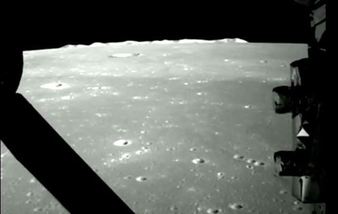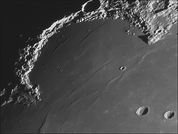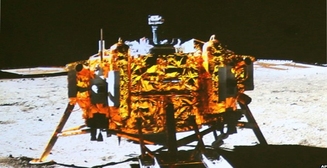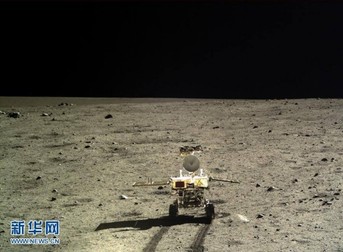 Images of the lunar surface were returned during the descent
Images of the lunar surface were returned during the descent  Landing site in the Bay of Rainbows
Landing site in the Bay of Rainbows  The Chang'e-3 'mother ship' on the lunar surface
The Chang'e-3 'mother ship' on the lunar surface lacks – and that is a clear direction. Don’t misunderstand me here –I’m not writing this to criticise the US activity. The Americans have over decades ‘fought a hard-won battle’ to secure leadership in human space exploration, and it grieves many spectators (including myself) to see that role eroded. America's space exploration programme is currently fraught with
confusion and a conspicuous lack of funding. Ever since Obama administration cancelled Bush's Constellation program that would have returned Americans to the moon, NASA’s near-term goal in human space exploration has been to visit an asteroid. However how Americans will get there is still an open question. On the other hand, it seems likely that the clear goal of the Chinese activity is to land people on the moon by the 2020s, and most likely there will not be US astronauts there to greet them.
 Image of the Jade Rabbit rover, taken by the 'mother ship'.
Image of the Jade Rabbit rover, taken by the 'mother ship'.  RSS Feed
RSS Feed
